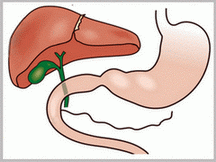
Gallbladder symptoms
Table of Contents
About me
Categories
Text
Abdominal pain is one of the commonest symptoms that gastroenterologists encounter both in outpatients and inpatients. This can sometimes provide a major diagnostic challenge, particularly in patients who are unable to give a good history. However, a good history, thorough examination and a basic understanding of typical patterns and clinical presentations of common diseases should help in making a diagnosis in most cases.
Abdominal pain can be categorized as visceral, parietal or referred. Visceral pain is dull and aching in character. It is poorly localized and is usually secondary to distention or spasm of a hollow viscus. Parietal pain is sharp and well localized and arises from irritation of the parietal peritoneum. Referred pain is the perception of pain at a site distant from the origin of the stimulus. One possible explanation for this is that the visceral and the somatic afferent nerve fibers share a common pathway at the level of the cord, which is the spinothalamic tract. The brain tends to associate the stimulation more with a somatic source rather than visceral. This type of pain is characteristically aching and perceived to be near the surface of the body. For example, referred pain from gallstones is sometimes perceived in the right shoulder because some of the afferent pain fibers run in the right phrenic nerve (C3–5).
It is important to have a basic understanding of some of the physiological factors that cause abdominal pain. The main visceral pain receptors in the abdomen respond to mechanical and chemical stimuli. The mechanical stimuli perceived are stretch, distention, contraction, compression and torsion. The chemical stimuli include substance P, bradykinin, serotonin, and prostaglandins. These receptors are located on the serosal surfaces, within the mesentery and within the walls of the hollow viscera.
Gut-related visceral pain is usually perceived in the midline because of bilateral symmetric innervation, except for pains originating from the gallbladder and the ascending and descending colon. Pain originating from other intra-abdominal organs generally tends to be unilateral.
The perception of visceral pain corresponds to the spinal segments where the visceral afferent nerve fibers enter the spinal cord. For instance, distention of gallbladder causes discomfort in the Epigastrium (T7–T9).
Labels: Gallbladder symptoms
3 Comments:

Tips Health
http://kidbuxblog.com/removing-gallstones-naturally/
Gall Bladder Cancer doctor In noida
Gall Bladder Cancer Consultant In noida